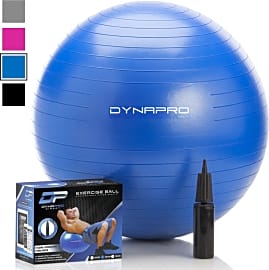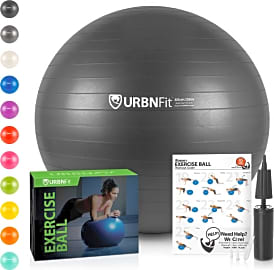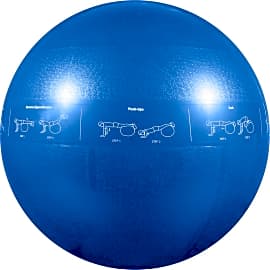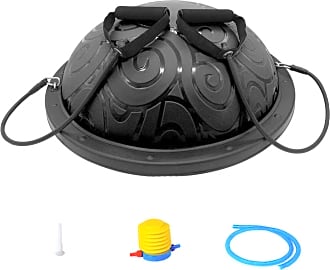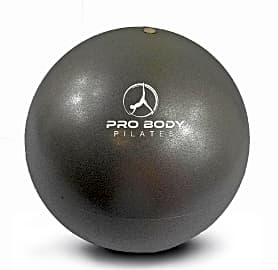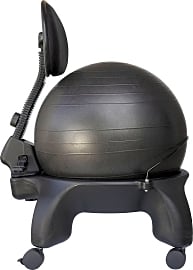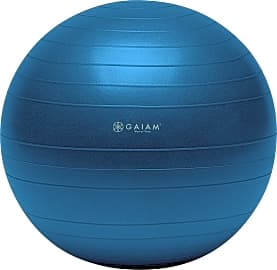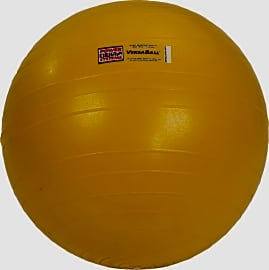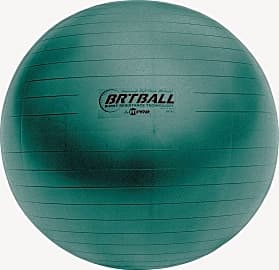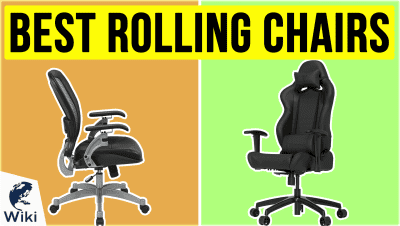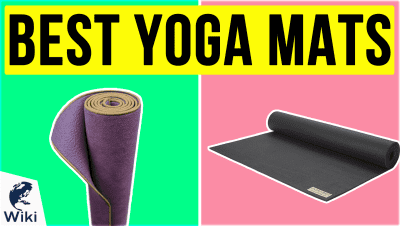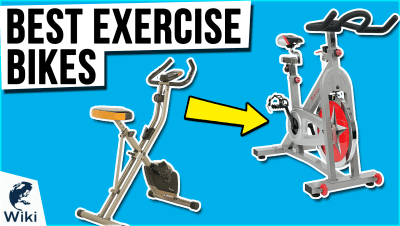The 10 Best Exercise Balls

This wiki has been updated 41 times since it was first published in May of 2015. Whether you're bored with your current fitness routine or want something to help you get stronger, exercise balls can be used to boost your coordination and balance while strengthening core muscles. Using one as a workout bench will make your moves more effective, and sitting on one while at your desk can improve your posture and physical health over time with little effort. When users buy our independently chosen editorial recommendations, we may earn commissions to help fund the Wiki.
Editor's Notes
March 31, 2020:
An exercise ball is a small investment, yet it opens up a host of new possibilities for improving your balance, resistance, and general physical fitness. Whether you’re looking to use one for your daily workouts or as a replacement for your office chair, our list offers plenty of viable options. Speaking of office chairs, the Isokinetics Tall Boy conveniently comes with a removable chair base, making it great for both use at your desk and workouts. Its wheels enable you to roll it around the office with ease, and they can also be locked when you want to stay put. Like a traditional office chair, it comes with an adjustable backrest as well. One caveat is that it can slightly irritate bare skin, so slacks or other long pants might be in order when you sit on it or use it for exercise.
Today we added in several popular and durable models, like the UrbnFit Balance, which comes in a wide range of colors from the muted to the bright. Like several others, this one comes with an inflation pump; it comes deflated and can be filled with air in just a few minutes. It’s good for yoga, Pilates, stretching, and office use. We also added in the GoFit Stability, which provides a lot of bang for your buck when it comes to quality, and it’s conveniently printed with illustrated instructions for poses that strengthen and tone your body.
We also added in the cleverly designed Ativafit Half Ball, which is great for anyone feeling intimidated about working out with a full-sized model. This one sits firmly on the floor, thanks to its six nonslip rubber feet. Its anti-burst technology allows you to sit, stand, kneel, or lie on it for exercises like pushups, squats, sit-ups, crunches, and plenty more. It’s lightweight enough to be carried to the gym or around your home with ease, and its textured matte surface makes it comfortable to use. It also comes with two exercise bands that can be latched securely to the sides to give you even more workout possibilities.
In this update, we removed the Stott Pilates Stability Plus, which is known to have trouble holding air, and the included pump is of poor quality. We also removed the Sportime Ultimax and the UR Superior Fitness, both of which are unavailable at this time.
No matter which model catches your eye, to ensure your safety, always discuss any new fitness routines with your doctor to make sure they’re appropriate for you. Also, help keep the ball from bursting by not over-inflating it or going over the manufacturer's stated weight limit. Always use yours on top of a mat to act as a cushion in case of a fall.
Special Honors
Gaia Stability Ball Workouts Among other fitness and meditation videos, a paid membership with Gaia will give you access to dozens of fitness ball routines. They’re designed to improve stability and target specific muscle groups, such as abs, shoulders, and arms, as well as providing a general upper and lower body focus. Monthly and annual memberships are available, with the month-to-month plan offered for $12 at the time of this writing. gaia.com
Workouts On Demand When you buy a membership, you’ll have access to more than 210 exercise videos, including various ones that incorporate a balance ball into the workout. These routines involve hand weights, and others incorporate pilates and yoga. Additional videos that are available include step aerobics, low-impact aerobics, cardio kickboxing, cardio dance, indoor cycling, toning and sculpting, and more. workoutsondemand.com
The Myriad Benefits of Owning an Exercise Ball
What's more, an exercise ball is elastic and soft, whereas a squat rack can impose a pulsing strain on your back.
With all of the advances in fitness equipment over the past 30 years, it might seem surprising that an exercise ball (aka stability ball) has remained so relevant. That is, of course, until you consider that an exercise ball is - and always has been - inexpensive, lightweight, low-risk, low-maintenance, durable, easy to use, and effective.
While a lot of fitness machines can help you develop core muscles, an exercise ball is actually proven to alleviate nerve inflammation, while working to correct certain orthopedic disorders, as well. What's more, an exercise ball is elastic and soft, whereas a squat rack can impose a pulsing strain on your back.
Exercise balls are portable, which means that you can take them with you to the park, or even the beach. Along those lines, a lot of exercise balls weigh less than 4 lbs, which means that they won't be a hazard for your children, and they could potentially provide a source of entertainment for your pets. Exercise balls have a significant weight capacity of at least 500 lbs, which means that you can sit on them. Exercise balls are also resilient, which means that you can squeeze them in between other items in your car.
The point of all this being that an exercise ball has more hidden benefits than you would probably think. It's a gateway into fitness with built-in assets for your health.
Several Basic Fitness Drills That Are Built Around an Exercise Ball
Exercise balls are so easy to use that simply leaning back against one of these devices and holding for several minutes can strengthen your core muscles. If you stand upright with an exercise ball wedged between your back and a wall, lowering your body and then raising it several times can tone your glutes, your lower-back, and your obliques, as well.
Complete several reps, and then switch sides to work the opposite hip.
You can do incline push-ups that work your abs by lying vertically with your thighs resting on the exercise ball and your hands pressing down against the floor or mat. You can work your quads by doing several squats (with your legs hip-width apart) while holding an exercise ball with both hands above your head.
If you really want to challenge your abdominal muscles, then position your shins on the exercise ball with your arms, unbent, supporting your upper-body (You should look like you have just completed a push-up.) From this position, roll the ball forward (slowly) using your shins. Fold your body until it appears like an inverted V. Hold. Then roll the ball back until you are in the resting position. Hold, and then repeat several times.
When you're warming up or cooling down, you can exercise your obliques by standing, and then leaning down and placing one hand on the center of the ball. Raise your other arm out so both arms are stretched into a vertical line (pointing upward from the ball). Now take your outside leg and stretch it horizontally so it is running in a straight line from your hip. Hold, and then bring your leg back to the ground. Complete several reps, and then switch sides to work the opposite hip.
A Brief History of The Exercise Ball
In 1963 an Italian manufacturer named Aquiliano Cosani invented a large elastic ball that could be used for therapeutic purposes. Cosani named his product the Pezzi Ball, and he initially marketed it to physical therapists. These therapists discovered that a Pezzi Ball had a remarkable impact on certain types of back pain, and that it could be used to alleviate certain types of nerve conditions, as well.
One of these therapists, a Swiss doctor named Susanne Klein-Vogelbach, developed an entire system of physical therapy that was centered around a Pezzi Ball.
One of these therapists, a Swiss doctor named Susanne Klein-Vogelbach, developed an entire system of physical therapy that was centered around a Pezzi Ball. Vogelbach's system, functional kinetics, was comprised of two types of exercises. There were static exercises, which required the patient to hold a position while leaning back against the ball, and there were mobile exercises, which required a patient to engage the ball while doing exercises that could stimulate the core.
Vogelbach's system yielded enough positive results that it caught the attention of American therapists, who were particularly interested in a Pezzi Ball's potential for promoting fitness. Based on research, America's physical therapy community found that a Swiss Ball (as they had taken to calling it) stimulated a variety of muscles by forcing the back to maintain stability amidst responding to an unstable object. This opened the door for manufacturers who rebranded the product as an exercise ball, subsequently promoting it as a resource for building muscles throughout the abs, quads, glutes, obliques, and thighs.
A lot of professional trainers, sports teams, and athletes began using exercise balls (or "stability balls") during the 1980s as a form of low-impact rehab from injuries. Shortly after, fitness instructors began building aerobic workouts around an exercise ball. Today, these balls continue to be a staple of the fitness and therapy communities. They've been adopted by the yoga community, as well.


